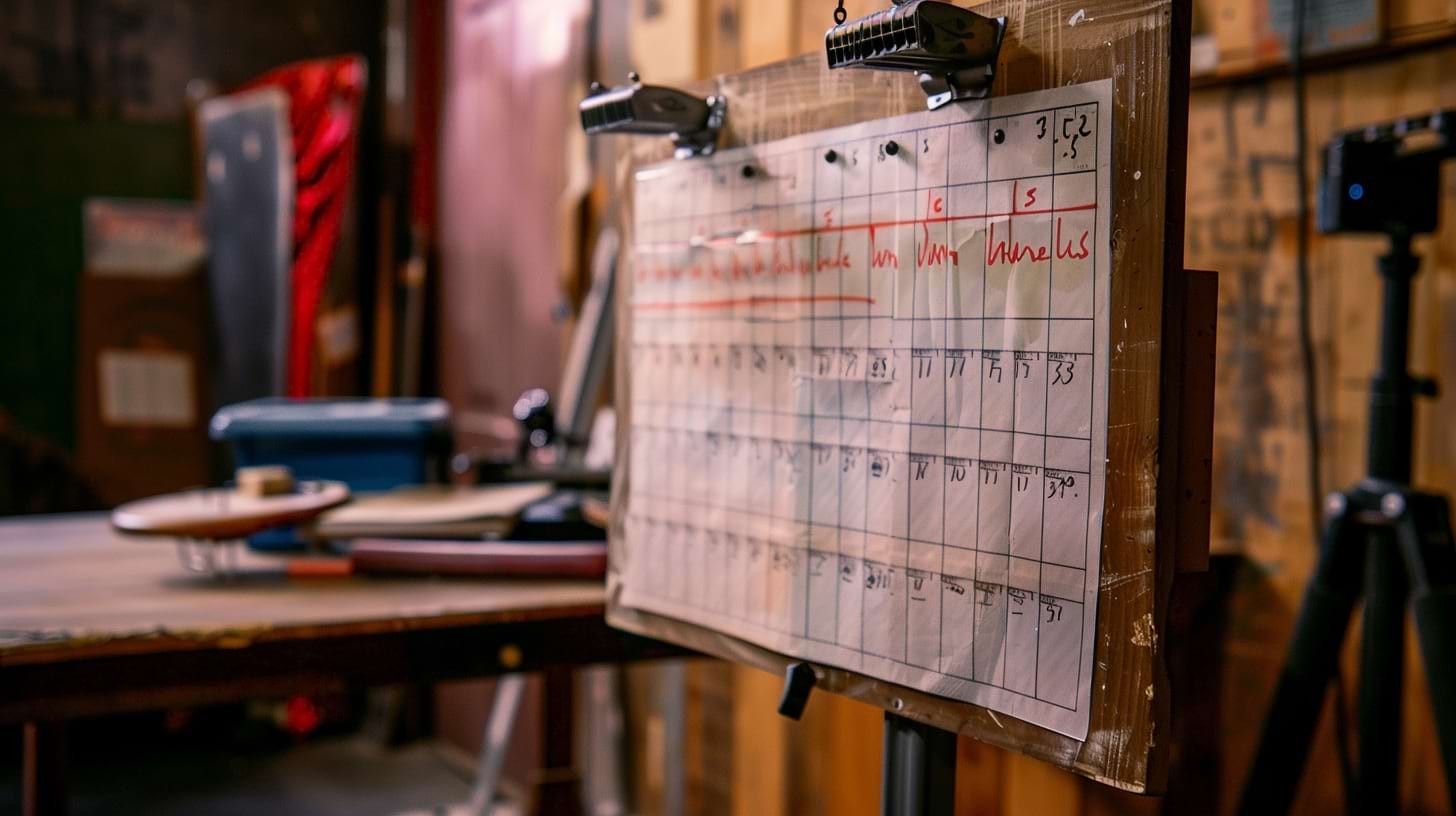The Role of Shooting Schedules in Post-Production Planning
Achieving flawless filmmaking demands meticulous planning and precise coordination. Integrating shooting schedules with post-production planning is essential to ensure resources are utilized optimally, timelines are maintained, and the production process is smooth.


Shooting schedules are the blueprint for any film production, detailing the timeline and logistics required to shoot each scene. These schedules ensure that resources, including cast, crew, equipment, and locations, are available when needed. On the other hand, post-production planning encompasses editing, sound design, visual effects, and more, all of which rely on the footage captured according to the shooting schedule.
The Importance of Shooting Schedules in Post-Production
Shooting schedules are crucial in the filmmaking process, particularly for post-production. Aligning the shooting schedule with post-production needs helps streamline workflows, minimize downtime, and ensure a smooth transition from shooting to editing.
Efficiency 📈
Well-structured shooting schedules maintain a consistent workflow, ensuring post-production teams receive the necessary footage on time.
Resource Management 📋
Proper scheduling prevents resource wastage by optimizing cast, crew, and equipment use.
Timeline Adherence 🕒
Adhering to a shooting schedule helps meet deadlines, which is essential for post-production to stay on track.
The Shooting Schedule Process
Creating an effective shooting schedule involves several steps to ensure all production elements are aligned and ready when needed. This process is crucial for maintaining the flow of production and meeting post-production requirements.

Scene Breakdown 📝
Each scene is analyzed to determine the necessary resources, including locations, actors, props, and special effects.
Timeline Creation 🗓️
A timeline is developed to schedule when and where each scene will be shot, ensuring optimal resource utilization.
Coordination 🤝
Continuous coordination between production and post-production teams ensures that footage meets the necessary editing and effects work standards.
💻 Tools and Software for Managing Shooting Schedules
Modern filmmaking benefits significantly from advanced tools and software designed to manage shooting schedules efficiently. These tools facilitate detailed planning and real-time adjustments, ensuring production stays on track.
Filmustage: An innovative software that uses AI to automate film pre-production processes, including script breakdown, scheduling, and budgeting, enhancing efficiency and accuracy.

Movie Magic Scheduling: A widely used tool that helps create detailed shooting schedules and manage logistics.
StudioBinder: This platform offers comprehensive production management features, including shooting schedules and task tracking.
Celtx: Combines scriptwriting, scheduling, and budgeting, providing an all-in-one solution for filmmakers.
The integration of advanced scheduling software not only streamlines the logistical aspects of shooting but also fosters better communication and collaboration among the various departments involved in a film's lifecycle. As technology continues to evolve, the ability to adapt and utilize these tools will become increasingly vital for filmmakers aiming to deliver high-quality content on time and within budget.
Integrating Shooting Schedules with Post-Production
Integrating shooting schedules with post-production planning involves continuous communication and coordination between production and post-production teams. This ensures that all footage is shot efficiently, facilitating efficient editing, sound design, and visual effects work.

Continuous Feedback 💬
Post-production teams provide feedback during shooting to ensure all necessary footage and elements are captured.
Adjustments ✏️
Shooting schedules are adjusted based on post-production requirements, ensuring any reshoots or additional footage are planned and executed efficiently.
Seamless Workflow ➡️
A well-integrated schedule ensures a smooth transition from production to post-production, minimizing delays and rework.
For example, the shooting schedule was closely coordinated with post-production during the making of The Lord of the Rings (2001-2003) trilogy. Given the extensive use of visual effects, this integration was critical to ensure the VFX team received the footage in a timely manner for processing and integration.
Benefits and Impact on Filmmaking
A well-planned shooting schedule, integrated with post-production planning, offers numerous benefits, enhancing the overall efficiency and quality of the film.
Improved Efficiency 🚀
Streamlined workflows and timely delivery of footage enhance overall production efficiency.
Cost Savings 💰
Effective scheduling minimizes delays and resource wastage, leading to significant cost savings.
Quality Enhancement 🌟
Coordinated efforts between production and post-production teams result in higher-quality films, as all elements are cohesively integrated. The role of shooting schedules extends far beyond the production phase, serving as a critical foundation for post-production planning. Efficiently managed schedules ensure that post-production teams have the necessary footage on time, aiding in a smoother transition from filming to editing. Ultimately, a well-crafted shooting schedule is not just a roadmap for the production phase but a pivotal component that supports the entire filmmaking journey, from pre-production to the final cut.
If you want to learn more about creating shooting schedules, visit our commercial section. Embracing these technological advancements will empower filmmakers to navigate the complexities of modern film production with greater efficiency and precision.
From Breakdown to Budget in Clicks
Save time, cut costs, and let Filmustage’s AI handle the heavy lifting — all in a single day.